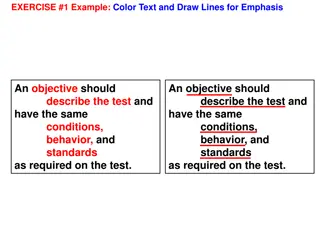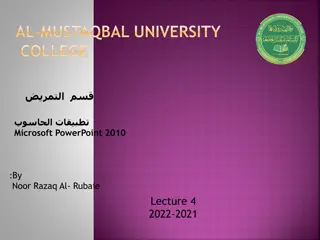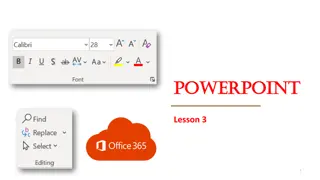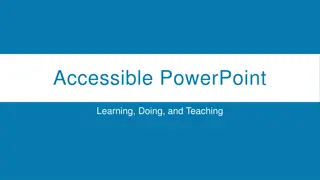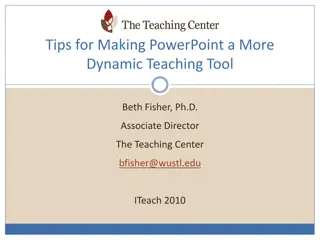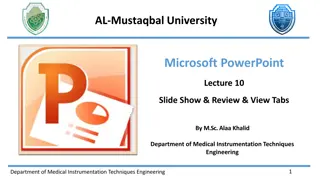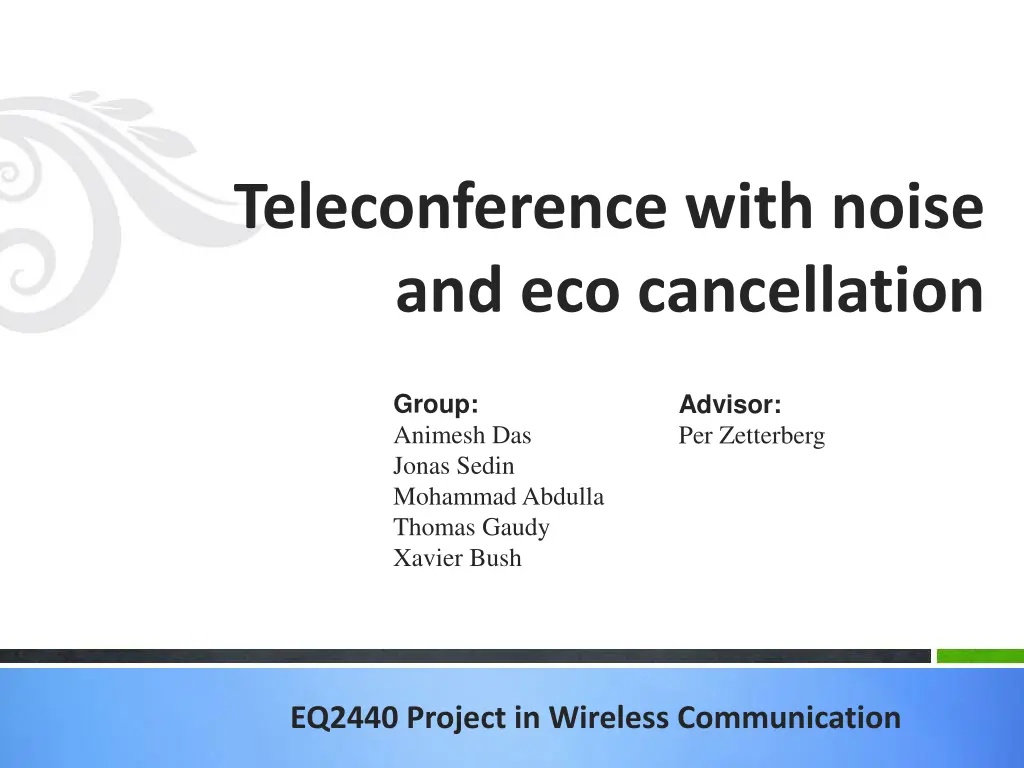
Teleconference Noise Cancellation Solutions
Develop high-performance solutions for noise cancellation in teleconferences to ensure clear communication. Explore different approaches, such as noise cancellation and speech enhancement, while considering the challenges posed by diverse noise sources.
Download Presentation

Please find below an Image/Link to download the presentation.
The content on the website is provided AS IS for your information and personal use only. It may not be sold, licensed, or shared on other websites without obtaining consent from the author. If you encounter any issues during the download, it is possible that the publisher has removed the file from their server.
You are allowed to download the files provided on this website for personal or commercial use, subject to the condition that they are used lawfully. All files are the property of their respective owners.
The content on the website is provided AS IS for your information and personal use only. It may not be sold, licensed, or shared on other websites without obtaining consent from the author.
E N D
Presentation Transcript
Teleconference with noise and eco cancellation Group: Animesh Das Jonas Sedin Mohammad Abdulla Thomas Gaudy Xavier Bush Advisor: Per Zetterberg EQ2440 Project in Wireless Communication
Background The first recognized work and patent on eliminating noise from speech signal was documented in 1934. In 1950, a systems was designed where the noise in helicopter and airplane cockpits communication were canceled. In 1985, a highly efficient Short-Time Spectral Amplitude (STSA) estimator for speech signals to minimize the mean square error of the log-spectra was developed.
Problem Formulation The diversity of noise nature and its sources lead to a big challenge Develop high performance solutions in these diverse environments. Important to take into account the variability that the noise may experience. Different classification of the noise Duration of the noise sequences, color of the noise and stationarity Therefore, a lot of systems are using combined techniques to reach the best possible performance
Approaches Two approaches Noise cancellation Speech enhancement
Speech enhancement logMMSE
Unsuccessful approaches RLS - Computationally infeasible Frequency LMS - Not enough noise reduction Kalman filter - Difficult to postulate a state space model - Also computationally infeasible Lattice Recursive Least Squares - Instable and difficult to implement
Android Setup
Android State Machine
Android App Interface
Conclusions Theory results LMS provides a big reduction of the noise logMMSE after LMS removes almost the 100% of the noise Android results Distance between phones affects filter order (5m => order 163) Big order => voice distortion Trade-off between noise cancellation and voice distortion Static phones limitation Set-up for good results Distance between Sender Phone and Noise Phone: 0.5 m Order of NLMS: 10-50
Future Work Proposal for future projects Reach a non-static application Reach phonic isolation between the Sender Phone and the Noise phone Reach maximum correlation between the additive noise of the Sender Phone with the pure noise recording Echo cancellation: enable hands free














